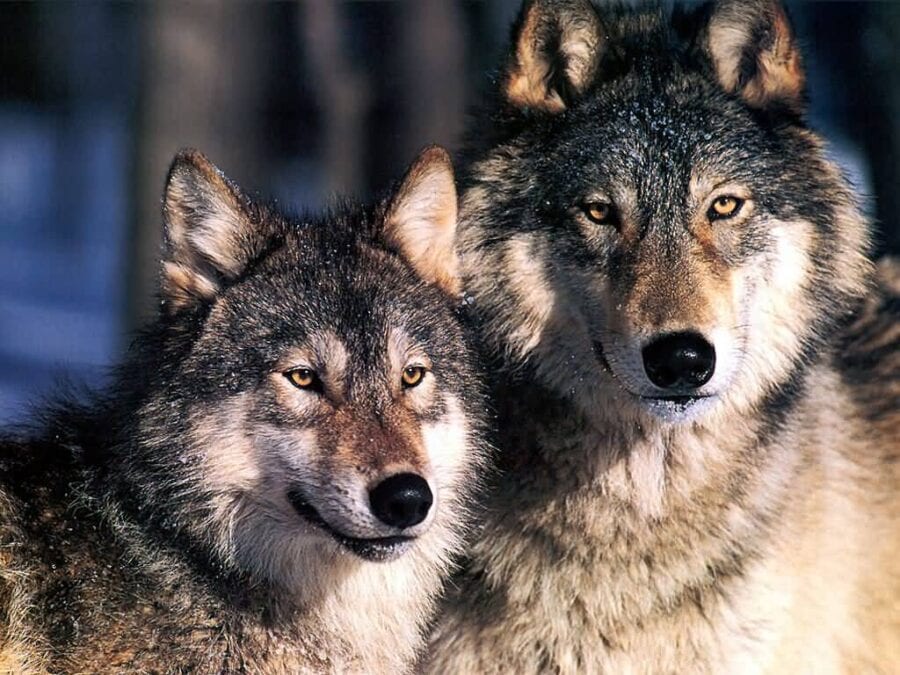WOLVES IN WARREN COUNTY
In recent years, area livestock raisers have been bothered by coyotes and an occasional bobcat, but almost 200 years ago the population of timber wolves and gray wolves in the state was of such a concern that the Illinois legislature in 1822 passed an act “to encourage the destruction of Wolves.”
The act provided that the person killing the most wolves (not less than 60) between April 15, 1823, and Nov. 15, 1824, should receive a prize of $200.
Local governments, including Warren County, offered bounty payments for wolf pelts, ranging from $1 in the early days to $5 by the 1890s.
Wolf hunts became popular winter sport on the prairie, with the earliest accounts of hunts in Warren County dating to the 1850s. The Monmouth Atlas described one such hunt which occurred in late February 1850:
“The Wolf Hunt went off yesterday with a rush. Some eight or nine hundred people were present. Five wolves are said to have been killed, and a much larger number are reported to have escaped by running the gauntlet. The latter, we think, will not be caught taking a horn in these parts again. Several deer were also run down and captured. As we did not witness the fun, we cannot speak of the goodness of the venison—none having been sent us. We regret to learn that some two or three of the riders were thrown from their horses and seriously injured. Mr. Henry Birdsall, near Ellison, it was rumored, had his arm broken, but we have since learned that it was not broken. The injury he received is very serious.”
An 1895 article in the Warren County Democrat chronicles the exploits of an old-time hunter of the Greenbush community named “Uncle” John Simmons, who one fall in the 1850s killed 105 deer and 61 wolves.
On Halloween of 1891, a novel form of entertainment involving wolves was presented at the Warren County Fairgrounds. For an admission of 35 cents, a spectator could witness wolves being released, one at a time, and chased by a pack of hounds until each wolf was dead.
In June 1893 the Galesburg Plaindealer reported that “Wolves are becoming as numerous as dogs in Warren county. They are of the genuine old-fashioned timber species and are exceedingly fearless, many venturing close to the farmyards in search of provender. They are sly, however, and evade the hunter. Within the past week thirty puppies have been captured. Sunday night Mrs. Dunkle of Monmouth caught a puppy wolf on Fourth Avenue. It had evidently strayed from the timber on the outskirts of the city.”
On March 15, 1894, the Warren County Democrat reported 25 to 30 hunters armed with Winchester rifles went on a wolf hunt near Greenbush, but came up empty. Earlier that month, an unsuccessful wolf hunt had occurred near Utah, Illinois
Indeed, according to the late mammologist Donald F. Hoffmeister of the University of Illinois, true wolves were likely extinct in Illinois by the 1860s. In his 1989 book, “Mammals of Illinois,” he wrote that his belief was that references to bounties being paid for wolf pelts in the late 1800s were actually for “prairie wolves” or large coyotes.
Yet even into the 20th century, Warren County was still paying bounties on what were described as wolf hides. On March 14, 1901, the Democrat reported that A.J. Hoover of Roseville township had brought in a pelt to the county clerk, which was described as “the skin of one of the largest wolves ever killed in the county.” Hoover, who received $5 for the 5-foot-long pelt, saw the wolf in a field playing with the horses and by creeping up behind a hedge was able to shoot it.
Certainly by 1910, Warren County’s wolf population was close to extinct, but that didn’t stop one New York newspaper from running a sensational story with a Monmouth dateline. The story began: “Wolves, big old, fat gray fellows are so numerous in Warren and Mercer counties that there is no longer any peace or safety in the rural districts on account of the howling of wolves, the barking of dogs, and the midnight vigils necessary to protect the small domesticated animals. Little rest is enjoyed in the average farm domicile. Recently a big wolf hunt was held in which hundreds of men and dogs participated and in which the whole countryside joined to witness the downfall of the prowling marauders. Twenty scalps were taken.”
The editor of the Republican-Atlas theorized that the story had its roots in an annual “wolf hunt” in the north end of the county, held primarily for sport, which was reported in the Chicago papers. The temptation by New York’s growing legion of yellow journalists to turn this story into something sensational apparently proved too great. Just as today’s media consumers are vulnerable to believing “fake news,” it was an easy matter in 1910 to convince urban readers that western Illinois was still an untamed prairie.
For Maple City Memories, I’m Jeff Rankin.














